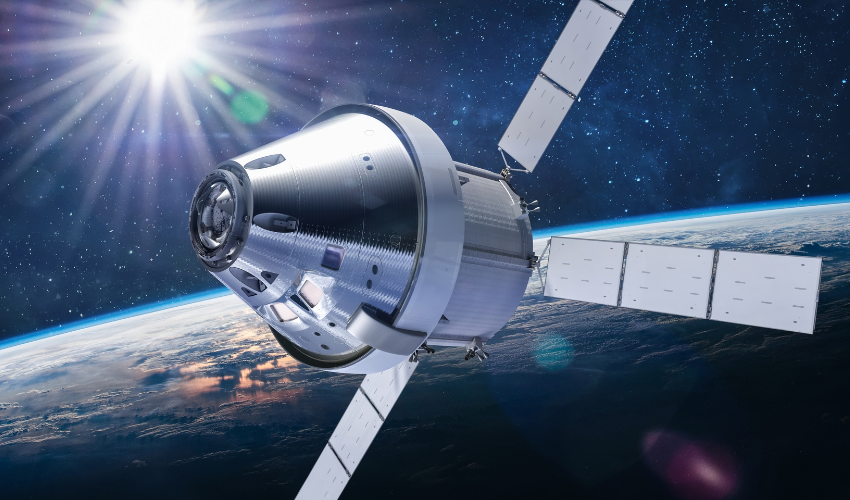
From the historic moon landing in the late sixties to the Curiosity rover celebrating its Martian birthday, space exploration has always been a realm of wonder and discovery, captivating us all with each new groundbreaking innovation. Behind every inspiring mission lies a hidden world of unique electronic components working tirelessly to enable the success of space missions.
Let’s prepare to launch on a journey through the advancements in electronic components and showcase how these cutting-edge technologies are propelling space exploration to unimaginable heights. From telemetry systems, to infotainment, GPS, and beyond—we reveal the transformative role these components have in shaping the future of space exploration.
Monitoring the health of anything on Earth is crucial and the same practices are applied to anything, living or machine, in our galaxy. In the endlessness of space, real-time data transmission is such a crucial factor for monitoring spacecraft health and mission success. Telemetry systems have experienced an extraordinary growth in their evolution by offering incredible capabilities in transmitting data and receiving commands.
Communication is practically seamless over vast distances, allowing scientists and engineers to accurately monitor and control missions. Space navigation requires highly accurate positioning and guidance systems for successful missions. These systems are extremely unique because they are specifically designed to soar through the cosmos and their advanced technologies have transformed space navigation, providing spacecrafts with precise location information, and ensuring accurate trajectory calculations.
The electronic components in both telemetry and navigational systems enable spacecrafts to reach these distant destinations with record accuracy, opening new possibilities for exploration and scientific discoveries.
The complexity of spacecraft design is evident due to their intricate composition of modules and components. If we take a closer look at what goes into this design, we will find connectors and fasteners—the silent components of what ensures the integrity and reliability of the electronic systems. These electronic components provide secure and efficient connections among the craft’s modules and systems, withstanding the harsh, extreme, and quite frankly, unknown, conditions of space.
An advanced connector design can offer reliability, reduced weight, and enhanced resistance to vibration and shock. These features will guarantee longevity and strength required to complete successful missions.
But what if the mission turns unsuccessful or if there are a few bumps in the starry road? Fortunately, missions generate an extreme amount of data using devices called black boxes, or flight data recorders.
This mission-critical data becomes crucial for scientific research and analysis in the event of a spacecraft anomaly or failure. The stored data includes system performance, communications, and sensor data. Black boxes are made to withstand harsh environments that include high temperatures and intense vibrations and will ensure that all valuable data can be achieved even under these conditions.
Now that we’ve covered what makes a spacecraft efficient and reliable, it’s time to focus on the incredibly brave and knowledgeable people who are inside of it all. The human factor in space exploration cannot be overlooked, and the development of in-cabin elements has transformed the way astronauts live and work in space, enabling them to focus on their missions with a peace of mind. The advancement of electronic components has revolutionized these elements, from advanced air filtration systems to cutting-edge ergonomic interfaces.
Comfort and safety are incredibly important for space travel, but these missions often involve long periods of isolated and immense mental and physical challenges. Maintaining a healthy crew morale and mental well-being is a priority next to safety, and to address these unique circumstances, infotainment systems have been developed to provide astronauts with access to entertainment, news, and educational content.
The systems have compact storage solutions and efficient power management along with high-resolution displays and immersive audio systems that play a significant role in helping astronauts stay connected to life on Earth.
The advancements in electronic components and technologies have launched space exploration into a new era of discovery. From telemetry systems that provide real-time data transmission to in-cabin elements that ensure astronaut safety and comfort, each innovation plays a vital role in pushing the boundaries of our understanding of what is out in our universe.
For over two decades, Area51 Electronics has been at the forefront of providing dynamic and comprehensive solutions in the aerospace and defense industries.
Case in point: our partnership with Jacobs, a company that provides a full spectrum of professional services including consulting, technical, scientific and project delivery for the government and private sectors. We worked with Jacobs to supply the electronic components for the Artemis I mission to orbit the moon. Our essential electronic components were used in NASA’s Vehicle Assembly Building and throughout the Exploration Ground Systems’ crawler, Mobile Launcher, and launch pad systems.
With a relentless focus on excellence, Area51 Electronics specializes in delivering top-of-the-line electronic, electromechanical hardware, and assembly components to meet the unique needs of these industries. Our unparalleled expertise in the complex commercial, military, aerospace, and defense industries offers high-caliber quality and accelerated time-to-market delivery for your custom projects.
By working with Area51 Electronics, we can start our journey of innovation and exploration, fueled by the limitless possibilities of electronic component advancements.
To learn more, reach out to a member of our team today.